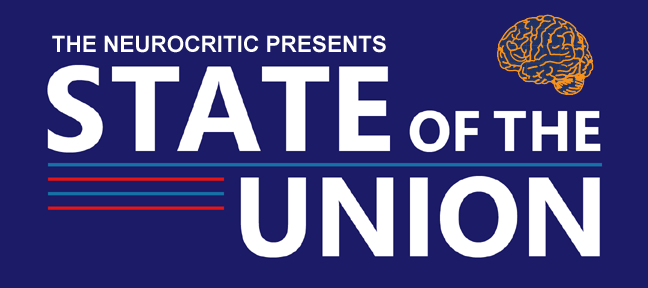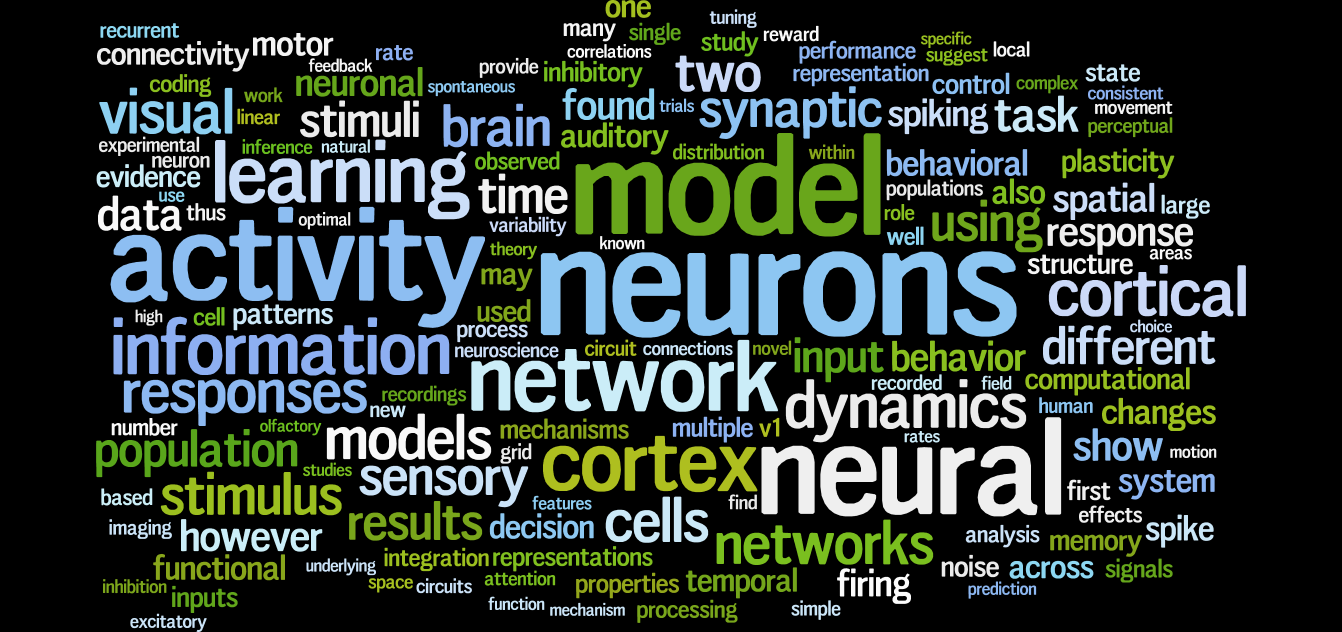A new study has found that the pain reliever TYLENOL® (
acetaminophen) not only dampens negative emotions, it blunts positive emotions too. Or does it?
Durso and colleagues (2015) reckoned that if acetaminophen can lessen the sting of psychological pain (
Dewall et al., 2010;
Randles et al., 2013) —
which is doubtful in my view
— then it might also lessen reactivity to positive stimuli. Evidence in favor of their hypothesis would support
differential susceptibility, the notion that the same factors govern reactivity to positive and negative experiences.
1 This outcome would also contradict the framework of acetaminophen as an all-purpose treatment for physical and psychological pain.
The Neurocritic is not keen on TYLENOL® as a remedy for
existential dread or
social rejection. In high doses acetaminophen isn't great for your
liver, either. And a recent meta-analysis even showed that it's ineffective in treating lower back pain (
Machado et al., 2015)...
But I'll try to be less negative than usual. The evidence presented in the main manuscript supported the authors' hypothesis. Participants who took acetaminophen rated positive and negative
IAPS pictures as less emotionally arousing compared to a separate group of participants on placebo. The drug group also rated the unpleasant pictures less negatively and the pleasant pictures less positively. “In all, rather than being labeled as merely a pain reliever, acetaminophen might be better described as an all-purpose emotion reliever,” they concluded (
Durso et al., 2015).
Appearing in the prestigious
Journal of Psychological Acetaminophen Studies, the paper described two experiments on healthy undergraduates, both of which yielded a raft of null results.
Wait a minute..... what? How can that be?
The main manuscript reported the results collapsed across the two studies, and the
Supplemental Material presented the results from each experiment separately. Why does this matter?
Eighty-two participants in Study 1 and 85 participants in Study 2 were recruited to participate in an experiment on “Tylenol and social cognition” in exchange for course credit. Our stopping rule of at least 80 participants per study was based on previously published research on acetaminophen (DeWall et al., 2010; Randles et al., 2013), in which 30 to 50 participants were recruited per condition (i.e., acetaminophen vs. a placebo). ... The analyses reported here for the combined studies are reported for each study separately in the Supplemental Material available online.
What this means is that the authors violated their stopping rule, and recruited twice the number of participants as originally planned. Like the other
JPAS articles, this was a between-subjects design (unfortunately), and there were over 80 participants in each condition (instead of 30 to 50).
After running Experiment 1, the authors were faced with results like these:
As expected, however, a main effect of treatment (though not significantly significant in this study) was obtained, F(1,72) = 2.15, p = .147, ηp2 = .029, as was the predicted interaction (although it was not statistically significant in this study), F(3.3, 240.3) = 1.15, p = .330, ηp2 = .016. Contrast analyses indicated that participants taking acetaminophen were marginally significantly less emotionally aroused by extremely pleasant stimuli (M = 5.01, SD = 1.75) than were participants taking placebo (M = 5.65, SD = 1.55), t(72) = 1.67,p = .099. Similarly, participants receiving acetaminophen were less emotionally aroused by extremely unpleasant stimuli (M = 6.88, SD = 1.25) than were participants assigned the placebo condition (M = 7.23, SD = 1.84), although this difference was not statistically significant in this study, t(72) = 0.96, p = .341. Furthermore, participants taking acetaminophen tended to be less emotionally aroused by moderately pleasant stimuli (M = 2.91, SD = 1.64) than participants taking placebo (M = 3.49, SD = 1.89), t(72) = 1.44, p = .155, and participants taking acetaminophen also tended to be less emotionally aroused by moderated unpleasant stimuli (M = 4.68, SD = 1.42) than participants taking placebo (M = 5.25, SD = 2.02), t(72) = 1.42, p = .161, although these differences were not statistically significant in this study.
Wow, what a disappointment to get these results. Nothing looks statistically significant!
Let's look at Experiment 2:
...Contrast analyses revealed that participants taking acetaminophen tended to rate extremely unpleasant stimuli (M = -3.39, SD = 1.14) less negatively than participants receiving placebo (M = -3.74, SD = 0.74), t(77) = 1.60, p = .115, though this contrast was not itself statistically significant within this study. Participants taking acetaminophen also rated extremely pleasant stimuli (M = +2.51, SD = 1.07) significantly less positively than participants receiving placebo (M = +3.19, SD = 0.88), t(77) = 3.06, p = .003.
Participants taking acetaminophen also tended to evaluate moderately pleasant stimuli (M = +1.15, SD = 0.91) less positively than participants receiving placebo (M = +1.42, SD = 0.89), t(77) = 1.30, p = .198, although this difference was not statistically significant in this study. Finally, participants taking acetaminophen tended to rate moderately unpleasant stimuli less negatively (M = -1.84, SD = 0.99) than participants taking placebo (M = -1.93, SD = 0.95), although this difference wasnot significantin this study, t(77) = 0.42, p = .678. [NOTE:"tended"? really?] Evaluations of neutral stimuli surprisingly differed as a function of treatment, t(77) = 2.94, p = .004, such that participants taking acetaminophen evaluated these stimuli significantly less positively (M = -0.05, SD = 0.42) than did participants taking placebo (M = +0.22, SD = 0.38).
One of the arguments that acetaminophen affects ratings of emotional stimuli
specifically (both positive and negative) is that it does
not affect ratings for neutral stimuli. Yet it did here. So in the paragraphs above, extremely pleasant stimuli and neutral stimuli were both rated as less positive by the drug group, but ratings for extremely unpleasant, moderately pleasant, and moderately unpleasant pictures did not differ between drug and placebo groups.
The subjective emotional arousal ratings fared better than the picture ratings in Experiment 2, but there were still some unexpected and non-significant results. Overall, support for the “acetaminophen as an all-purpose emotion reliever” was underwhelming when the studies are examined singly (which is how they were run).
2[Right about now you're saying, “Hey! I thought you said you'd be less negative here!”]Let's accept that the combined results reported in the main manuscript present a challenge to the “acetaminophen as a psychological pain reliever” view, and support the differential susceptibility hypothesis. To convince those of us outside the field of social psychology, it would be beneficial to:
(1) design within-subjects experiments, and
(2) seriously consider possible mechanisms of action, beyond speculations about serotonin and (gasp!)
5-HTTLPR. For instance, why choose acetaminophen (which may act
via the spinal cord) and not aspirin or ibuprofen?
3At the risk of sounding overbearing and pedantic, I hereby issue the following friendly suggestions to all TYLENOL® psychology researchers...
The Proper Pharmacological Study Design Challenge(1) Please consider using a double-blind, randomized crossover design, like studies that have examined IAPS picture ratings after acute administration of
SSRI antidepressants or placebo in healthy participants (
Kemp et al., 2004;
van der Veen et al., 2012;
Outhred et al., 2014).
Speaking of SSRIs, did you know that
citalopram did not alter IAPS valence or arousal ratings relative to placebo (
Kemp et al., 2004)? Or that
paroxetine produced only minor effects on valence and arousal ratings for two of the eight conditions (
van der Veen et al., 2012)?
4 What are the implications of these findings for your theoretical framework, that an OTC pain reliever supposedly has a greater impact on emotional processing than a prescription antidepressant? And that before the recent
JPAS papers, no one has ever suspected that TYLENOL® affects reactions to emotionally evocative stimuli or
David Lynch films?
(2) Please consider that acetaminophen may act via COX-1, COX-2, COX-3, peroxidase, nitric oxide synthase, cannabinoid receptors, and/or descending serotoninergic projections to the spinal cord (
Toussaint et al., 2010) before mentioning the
anterior cingulate cortex or the serotonin transporter gene. Just another friendly suggestion.
I usually give all my ideas away for free, but if you're interested in hiring me as a consultant, please leave a comment.
ADDENDUM (May 6 2015): A commentbyDr. R(who developed theReplication-Index) said there was nothing wrong with combining the two studies. Study 1 was non-significant but Study 2 was significant, and combined the results were statistically credible (although I'm not exactly sure which of the many tests he checked). Perhaps one source of trouble was that Durso et al.'s estimated number of participants was based on inflated effect sizes in the earlier papers...Footnotes1 Turns out
differential susceptibility is more or less
The Orchid and the Dandelion, or as author David Dobbs puts it, “some of the genes and traits generating our greatest maladies and misdeeds — depression, anxiety, hyper-aggression, a failure to focus — also underlie many of our greatest satisfactions and success." I don't really see how this acetaminophen study informs the differential susceptibility hypothesis, which is based on individual differences (beyond a metaphorical kinship, perhaps).
2 But then I missed the
memo from
Psych Sci on “recently recommended approaches to presenting the results of multiple studies through combined analyses.” [
paging @mc_hankins...]
3 I know the original social rejection study used Tylenol, but why does everyone persist in doing so??
I was pleased to see that in the
press release, first author
Geoffrey Durso said they're branching out to test ibuprofen and aspirin. [
There, something positive.]
4 To be precise, participants gave lower arousal ratings to high arousal, low valence pictures and slightly lower valence ratings to high arousal, high valence pictures. The other six cells in the arousal/pleasure ratings of high/low arousal, high/low pleasure were no different on drug vs. placebo.
ReferencesDewall CN, Macdonald G, Webster GD, Masten CL, Baumeister RF, Powell C, Combs D, Schurtz DR, Stillman TF, Tice DM, Eisenberger NI. (2010).
Acetaminophen reduces social pain: behavioral and neural evidence.
Psychol Sci. 21:931-7.
Durso, G., Luttrell, A., & Way, B. (2015). Over-the-Counter Relief From Pains and Pleasures Alike: Acetaminophen Blunts Evaluation Sensitivity to Both Negative and Positive Stimuli. Psychological Science DOI: 10.1177/0956797615570366Kemp AH, Gray MA, Silberstein RB, Armstrong SM, Nathan PJ. (2004).
Augmentation of serotonin enhances pleasant and suppresses unpleasant cortical electrophysiological responses to visual emotional stimuli in humans.
Neuroimage 22:1084-96.
Machado GC, Maher CG, Ferreira PH, Pinheiro MB, Lin CW, Day RO, McLachlan AJ, Ferreira ML. (2015).
Efficacy and safety of paracetamol for spinal pain and osteoarthritis: systematic review and meta-analysis of randomised placebo controlled trials.
BMJ. 350:h1225.
Outhred T, Das P, Felmingham KL, Bryant RA, Nathan PJ, Malhi GS, Kemp AH. (2014).
Impact of acute administration of escitalopram on the processing of emotional and neutral images: a randomized crossover fMRI study of healthy women.
J Psychiatry Neurosci. 39:267-75.
Randles D, Heine SJ, Santos N. (2015).
The common pain of surrealism and death: acetaminophen reduces compensatory affirmation following meaning threats.
Psychol Sci. 24:966-73.
van der Veen FM, Jorritsma J, Krijger C, Vingerhoets AJ. (2012).
Paroxetine reduces crying in young women watching emotional movies.
Psychopharmacology 220:303-8.
Better get this woman a damn fine cup of coffee and 1000 mg of TYLENOL®










































.jpg)














.jpg)

















